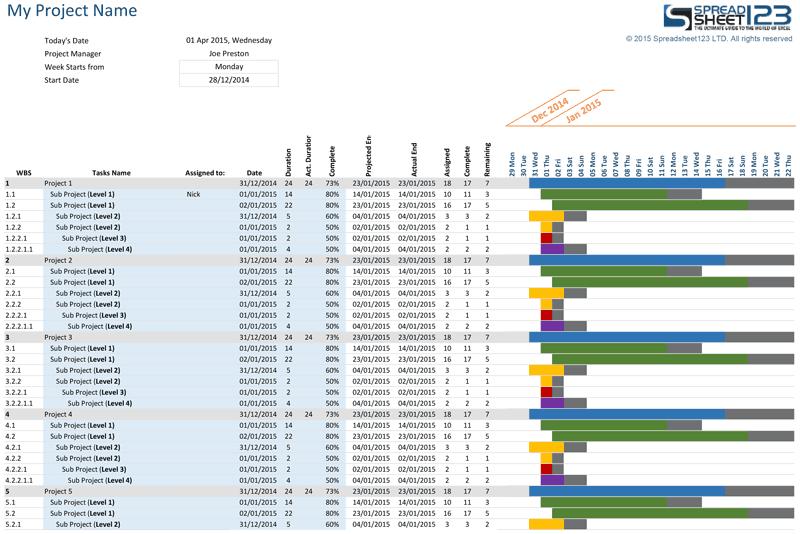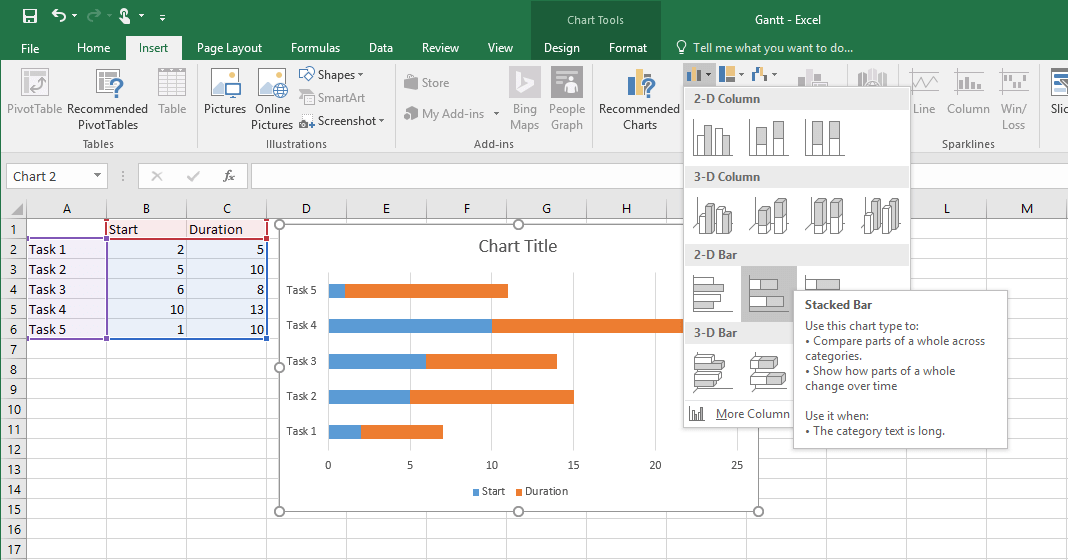
Hide the chart key to obscure the data sets, making it look more like a purpose-built Gantt chart. You can even format individual stages by going back to your original data and placing each stage’s duration information into distinct columns and changing the colour or gradient of each new column. You can edit the borders, axes and labels, show duration in numbers on each of the columns, or add grid lines to the chart. You can now customize your chart however you’d like using the Style tab. You should be left with the basics of a Gantt chart showing the duration of each stage in progressive order. This will render them invisible without affecting the makeup of the table as a whole. Select one of the bars from your start week set and select No Fill from under the style tab. You can now perform a couple of formatting changes to convert your stacked bar chart into a Gantt chart. This will give you a chart stacking the duration of each phase on top of the start week. For this, you’ll need to select 2D Stacked Bar from the Chart section under Insert with the chart you created above highlighted. Now that you have your data, use the information to create a visual representation using the in-built chat feature. Then, input the duration of each phase in the third column. Base this on how long you expect each project phase to take, calculated with the beginning and end date. Then, in the default table, enter the key phases of your project succinctly in the first column, and the start week for the projects in the second column (i.e.

To begin, select the Charting Basics Template under Basic in the Template Gallery, then add a new sheet with the + tab.
MAKE A GANTT CHART IN EXCEL FOR MAC SOFTWARE
While Apple’s spreadsheet software Numbers does not come with Gantt chart functionality, there is a way to create similar visualizations using other frameworks that come with the app.

Visualizations of long-term project timelines are a great way to keep teams on track with multi-stage projects, and a Gantt chart is an easy frame of reference that project managers and other employees alike can interpret with ease. Gantt charts is a core element in any project manager’s toolkit, invaluable for plotting out projects across long time scales to aid in planning and project development. Luckily, there are some workarounds that can help you take advantage of this popular project management tool on Macs. However, despite the pace of technological change, there are still some operating systems that have yet to adapt to Gantt chart making (we’re looking at you Apple). Project managers are forever looking for attractive and engaging ways to communicate deadlines, projected timelines and other useful information to company hierarchies and employees, and the Gannt chart has been the favourite visualization method for decades.


 0 kommentar(er)
0 kommentar(er)
